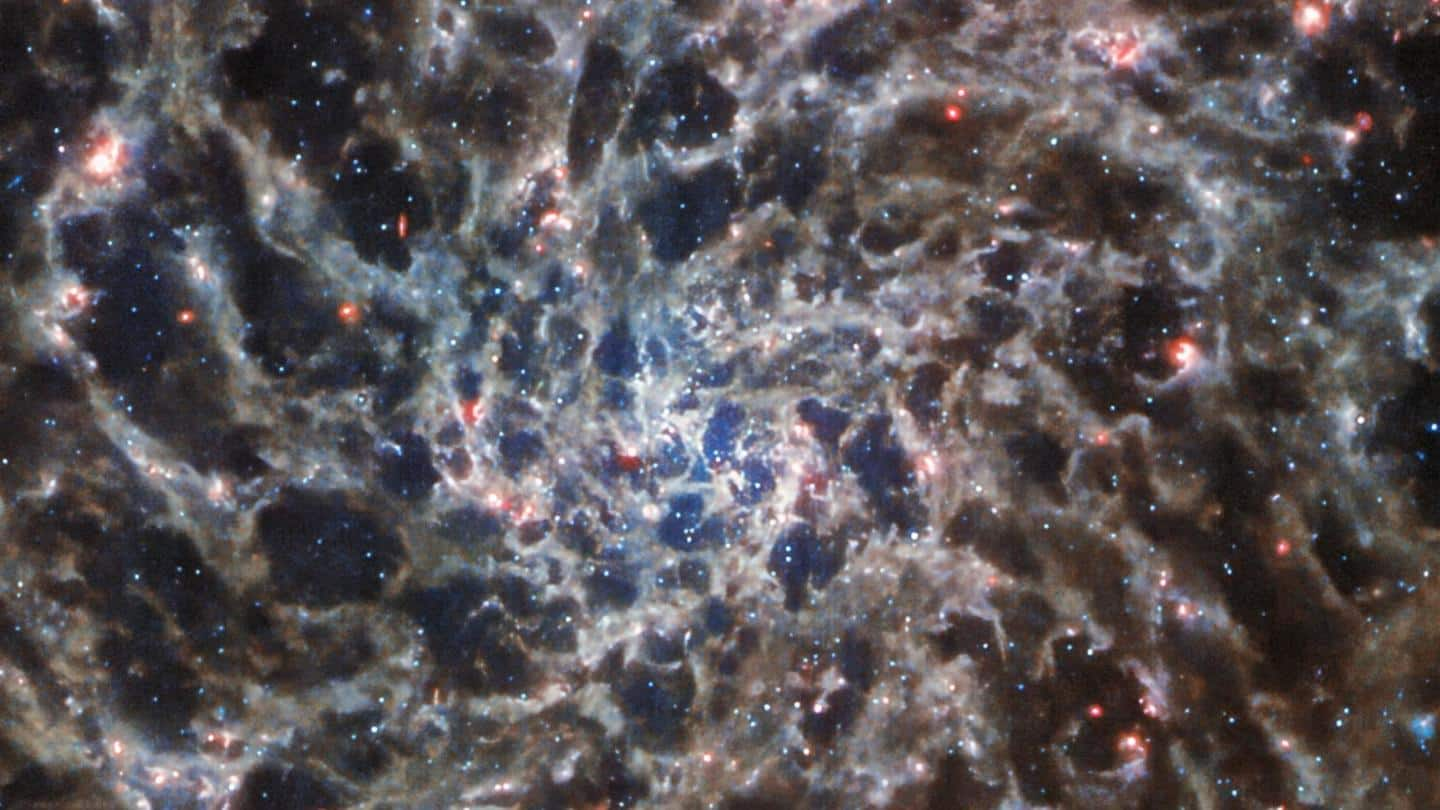
James Webb telescope reveals distant galaxy with a bone-like structure
What's the story
The James Webb Space Telescope (JWST) continues to amaze us with incredible pictures of the unseen realm.
This time, the telescope has gone a step ahead to lift the veil off the fine details of the gaseous 'bone' structure of a spiral galaxy located in the Sculptor constellation.
The galaxy named 'IC 5332' lies roughly 29 million light-years from our planet.
Context
Why does this story matter?
The James Webb telescope is truly a technological marvel. The meticulously designed telescope, with its unique specificity to infrared light, has offered stunning glimpses into the secret cosmos.
To recall, the telescope has already produced the deepest image of the universe, along with pictures of cartwheel galaxies, Neptune's ghostly halo, the Einstein rings and Orion's sword, among others.
Properties
MIRI's detectors can function at extremely low temperatures
The JWST is strategically placed at the Lagrange point to capture even weak infrared signals.
The Mid Infra-Red Instrument (MIRI) is the only instrument on the telescope which operates in the mid-infrared region of the electromagnetic spectrum, while others are sensitive to near-infrared light.
MIRI's detectors are uniquely designed to function at a temperature that is only 7°C above absolute zero (−273.15°C).
History
The spiral galaxy has already been viewed through Hubble
The IC 5332 galaxy lies nearly 29 million light-years from Earth and measures roughly 66,000 light-years in diameter, which is approximately two-thirds of the Milky Way.
Previous images from the Hubble Space Telescope showed dark regions between the spiral arms of the galaxy engulfed in dust clouds.
Hubble pointed out the dusty areas in the galaxy because it is sensitive to ultraviolet radiation.
Power
MIRI's detectors can evade heat interferences from mid-infrared regions
The cold environment of MIRI's detectors helps evade heat interferences arising from the mid-infrared regions. However, Hubble is not equipped for the same.
Further, infrared light is less prone to scattering by interstellar dust. This explains why JWST can penetrate dust clouds.
European Space Agency explains that the dark region of the galaxy is a 'continual tangle of structures' that renders the spiral shape.